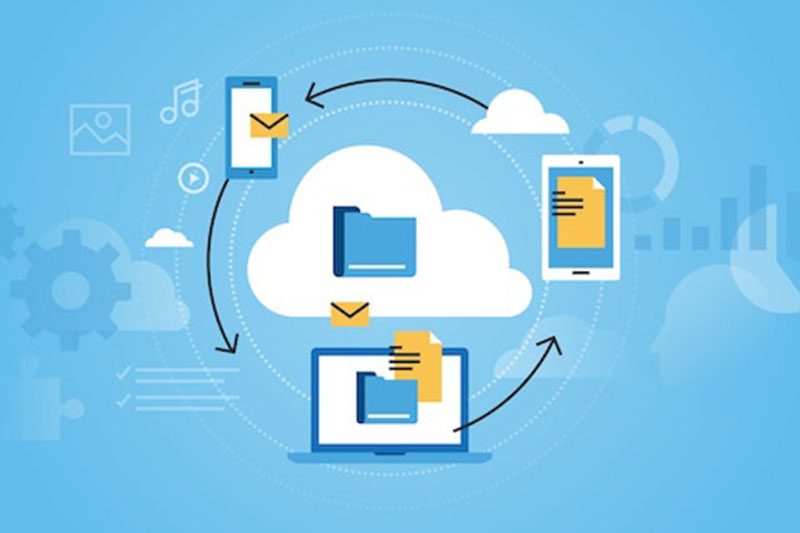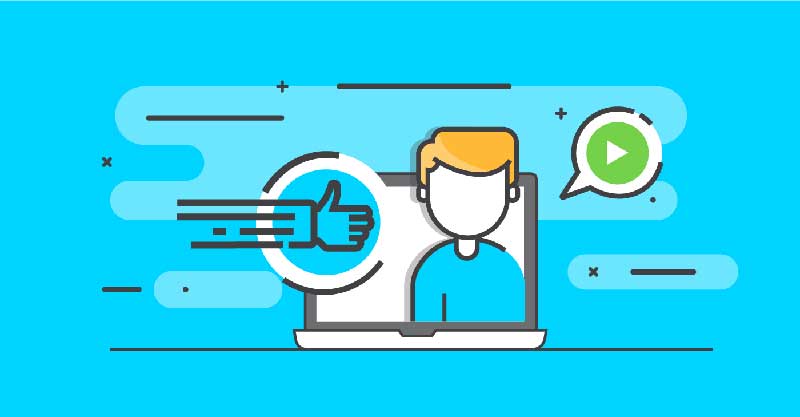Frequently Asked Questions About SaaS
Software as a Service or SaaS is already a technology known and used by many companies.
But while for some people talking about SaaS is as common as talking about “cloud” on the internet, for others it still raises some questions.

7 Frequently Asked Questions About SaaS
Software as a service is nothing more than its own name says, software that provides a service.
To begin with a good example, Coursify.me is a SaaS that provides hosting service for online courses.
There are SaaS developed to fulfill the most diverse functions and if you think you do not know any, we will name just three names to show that you are wrong: Dropbox, PayPal and Netflix.
Yes, these three tech giants that provide services that are completely different from each other are SaaS.
You may now have a clearer idea of what this software-as-a-service is, but to top it off, we’ve put together and answered 7 very common questions on the subject.
1. What is SaaS?
In more detailed lines, SaaS is a method of remotely delivering software, meaning that the service contractor can access it from any device with an Internet connection.
In this web-based software model, vendors host and maintain the servers, databases, and code that make up the application.
The main difference between a SaaS and traditional software is its delivery model.
In the first case, companies hire the service and pay a monthly fee for its use, as occurs in Coursify.me, Netflix, etc.
In the second, they purchase a permanent license to use the software and must install it on their own computers to use it. As we have done with Office, Photoshop and so many other programs for so long. We all know the work this can mean.
One of the key advantages of SaaS over this traditional model is that companies do not have to invest in hardware to host software, which allows them to also outsource most of the IT responsibilities typically required to troubleshoot and maintain software. The SaaS provider takes care of everything.
In addition to allowing remote web access, SaaS also differs from local software in its pricing model.
Local software is typically purchased under a permanent license, meaning that buyers have permission to use the software. They also pay 15% to 20% per year in maintenance and support fees.
SaaS, on the other hand, allows buyers to pay an annual or monthly subscription fee, which typically includes software license, support, and most other fees.
This service model allows small and medium enterprises to use software that they otherwise could not, due to the high cost of the license.
2. What is the difference between SaaS and cloud computing?
That is one of the most asked questions, definitely.
The famous cloud refers to an incredibly complex set of infrastructure technology.
In a basic explanation, it is a collection of computers, servers, and databases that are connected together in a way that users can grant access to share their use.
The cloud can refer to anything remotely hosted and delivered via the Internet.
Although all cloud programs are run by underlying software, SaaS specifically refers to commercial software applications that are delivered via the cloud.
Today, almost every type of business management software – from human resources to marketing – is available via SaaS.
– 5 advantages of moving your online training to the cloud
3. Who owns my data?
This is not just a question, but a very common fear among people and companies thinking about hiring a SaaS.
Certainly, to start a contract followed by registration on a platform, data and information from the contractor is required.
As with most online transactions, many people are still reluctant to provide payment data, for example. Not only afraid that someone might access them, but also that the software company will “own” such private information.
Certainly, you should pay attention to this when negotiating a service level agreement (SLA) with your SaaS provider.
In addition to setting system reliability standards, the SLA sets parameters for various issues, such as data ownership, security requirements, and maintenance schedules.
In terms of ownership of the data, buyers should ensure that there is a clause in the SLA that unambiguously indicates that they are the owners.
Most SaaS contracts have internal, prepaid contingencies that will give you access to your data if suppliers close their business and make sure you have that data.
In addition, most SaaS vendors allow you to export your data and back up locally at any time. It is very unusual for any provider to insist on retaining ownership of their data. If you notice this in a clause, do not sign.
4. Is my data secure?
This question complements the previous one and is based on the same fear as those considering using a SaaS.
Security is a priority when it comes to allowing someone else to keep data critical to your business, especially for large companies.
However, with online banking becoming the norm today, as well as many other business operations, there is nowhere to run and this insecurity is gradually being overcome.
The good news is that SaaS vendors are actually able to invest a lot more in security, backups and maintenance than any small to medium business.
For this reason, a web-based system usually has more security measures than a local system. In addition, most SaaS vendors undergo rigorous audit security procedures that test the data center security level. A local IT department, on the other hand, may not hold to the same standards.
5. What if my SaaS provider goes out of business?
This is a legitimate concern. Let’s not forget that a SaaS is a business, and how any business is subject to failure or termination.
The data, however, remains yours.
Most SaaS providers prepay their data center hosting company to “keep the lights on” for a while.
This prepaid fee aims to protect companies to ensure their data is accessible in case something happens to the vendor.
The important thing here is to make sure your SLA has a clause that explicitly states that you can export your data from your provider, which most SLAs describe as standard practice.
This clause should also include how often and in what kind of format you can access your data. It is common for SLAs to determine that the provider will help migrate your data at an appropriate rate.
6. Can I customize SaaS?
Thanks to the time and evolution of SaaS, today, in the vast majority of cases, the answer to this question is yes.
It is becoming much easier and more common to customize SaaS systems to assume the identity of the contracting company.
In the case of Coursify.me, for example, various customization features, ranging from logo and image insertion to custom domain, are made available to platform customers.
Subscribers can customize the user interface to change the look of the software, as well as modify specific areas such as data fields and photos.
For SaaS to represent and meet the needs of the enterprise that uses it, a number of other features (depending on the type of SaaS) can also be turned on and off at will.
This is another major advantage of this solution over selling software in the traditional model.
Aware of this, software vendors are investing more in development to provide customization and flexibility to companies that still prefer local software.
Of course, all this varies by application and vendor. Some are further ahead than others.
7. What are the limitations of the operating system (OS)?
The main disadvantage of SaaS is that it depends on a good Internet connection.
Some people also worry about operating system compatibility. Most business systems are designed to run on Windows or Linux, but with the increasing use of Apple computers in the corporate world, this is starting to change.
In addition, most SaaS companies support multiple web browsers; so whatever system you use, you can access your SaaS applications.
Local software, while not dependent on the internet, is subject to other problems such as power outages, hardware failures, and various other maintenance and upgrade risks.
SaaS updates are made by providers and made available to their customers.
To alleviate the problem of a dropped connection, some SaaS vendors have developed “offline” functionality that allows people to keep working in case the Internet goes down. When a solid connection is available again, all data will be synchronized with the system.
Coursify.me: SaaS for hosting online courses

SaaS with a focus on online teaching and learning, Coursify.me is designed to be a Learning Management System (LMS). A kind of virtual class, where students and teachers can come together and have all the resources both parties need.
– Whats is a Learning Management System
Cloud-based SaaS, there are several advantages to hosting your online course at Coursify.me, such as:
- It does not require investments in infrastructure, maintenance and upgrades;
- Model of teaching tested and approved;
- Saving time and money with system developers;
- Easy configuration of functions and layout;
- Specialized technical support.
Complete Elearning platform, Coursify.me is the ideal solution for anyone who wants to create, sell and promote courses on the internet without having to invest to start their own business.
– Everything you need to know about LMS
Serving businesses and professionals in more than 60 countries, the platform is a dynamic and customizable Learning Management System.
That means you do not need to invest in building your own website. The Coursify.me is ready for you enter your course and create a fully customized page for your business.
We have three choices of plans for you to decide which best suits your needs, and the good news is that the Beginner Plan is free!
Visit our website, test the platform and start selling online courses right now.

